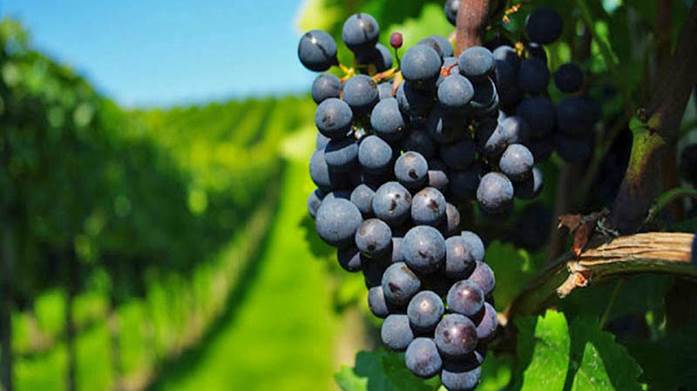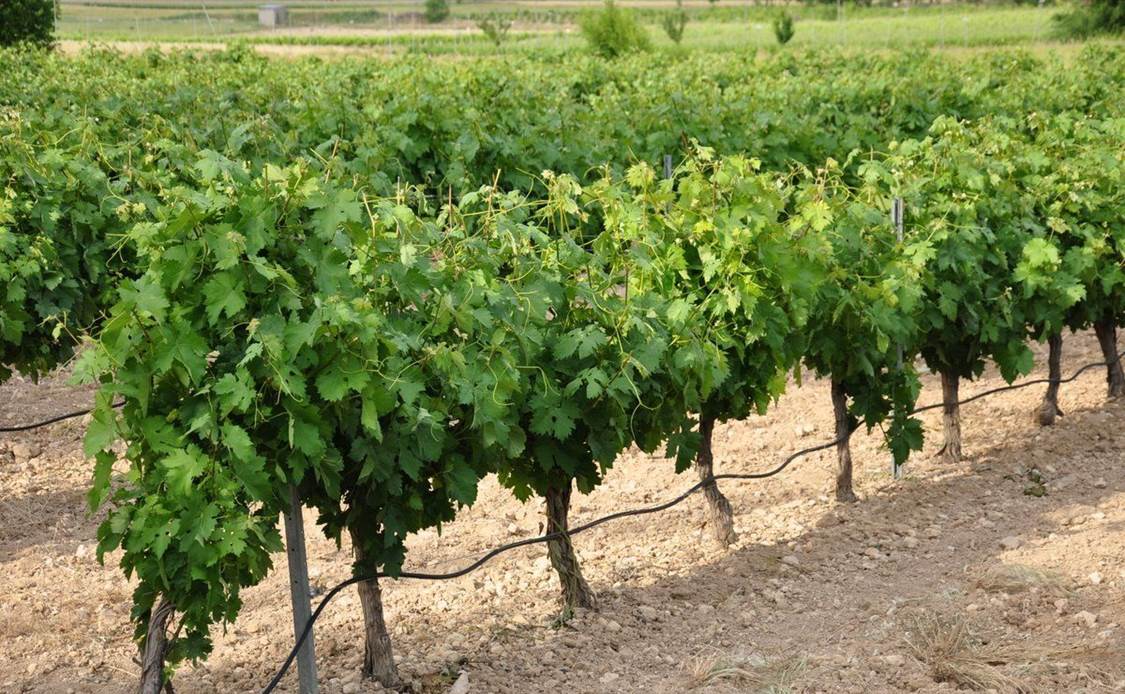This article discusses the key points of vine cultivation, taking into account the need to offer a balanced supply of nutrients and water at all times.
Adequate climate and temperature
When we choose a harvest, we take into account the climate and the temperature of the place where we are going to plant.
Variations can occur each year that alter the final harvest, so we must ensure that there is sufficient margin so that, whether it is a year colder than usual or hotter, both the plants and the fruit can grow and mature without problems.
We can make use of other resources that allow us to stabilize these levels a bit. At present we have at our disposal from elements that allow to increase or decrease humidity, to others that protect our harvest from heavy rainfall, hail, or we can even regulate aspects such as temperature. However, in most cases this is not necessary, since precisely the vine has a good margin to adapt to normal weather conditions.
If our plantation is in an area prone to the development of Botrytis, we can make use of CultisilK, a product based on silicon and potassium, ideal for reducing relative humidity, and with it, the risks of suffering an attack by this fungus. causing the gray rot as we improve the fattening and maturation of the grape. CultisilK additionally creates a protective layer on the surface of the plant, helping to cushion the thermal regime and reducing the incidence of damage by biting / sucking insects, such as the green mosquito.
In any case, it must be remembered that it is best to orient the plantation towards the sun, which implies that in the southern hemisphere it will have to face north, while in the northern hemisphere it will have to face south.
Work the soil and load it with nutrients
A mistake that can be fatal in vine cultivation is that of not working and nourishing the soil sufficiently.
The vine needs a soil that is rich in potassium, in addition, it is very important that there is not an excess of moisture in it, that is, we have to make sure that we use a good drainage system to prevent rotting as well as pests and diseases caused by excessively moist soil.
On the other hand, we must also be taken into account that the contribution of nutrients has to be well regularized, so that we can obtain a sufficient harvest, both in quantity and quality.
This means that if there is an excess of fertilizer, we will obtain a greater harvest, but at the same time the quality of the same will be inferior. And on the contrary, with a poor subscriber we will not get a good harvest yield, which does not necessarily mean that we are going to have a quality grape.
Let us remember the importance of providing quality nutrients that allow us to correct those habitual deficiencies that usually occur in plantations.
In this sense we have a wide variety to choose from such as Cultifort Mix, Ferrofort, Cultiboro Plus and Microvital-L products, each of them being useful depending on what we want to work exactly, that is, if we only want correct the lack of essential micro elements, if we want to obtain an extra contribution of iron, or if we want to promote the transport of sugars and nutrients to the fruit.
All nutrition starts from a good state of the soil. For this, we recommend Microvital – L. It is an organic amendment rich in magnesium and microelements, which acts on the physical-chemical parameters of the soil, in addition to activating its microbiota. It has organic complexes that, in addition to improving the development of microorganisms, complex the nutrients present in the environment, improving their mobility and facilitating their assimilation and transport in the plant. Microvital – L corrects deficiencies of magnesium, boron, iron, manganese and zinc; improves the cation exchange capacity (CIC), the C / N ratio, the clay-humic complex, the infiltration and retention of water, and a long etc., which translates into an improvement in soil fertility. The flavonoid molecules contained in Microvital – L, as polyphenols that they are, act as natural antioxidants, protecting the plant, for example, from the negative effects of UV radiation; they delay foliar senescence, keeping the plant photosynthetically active for a longer time, improving the quality of the fruits and strengthening the plant against different types of stress.

Take good care of the dates and irrigation volume in vine cultivation.
As we were saying, an excess of humidity can be fatal for our harvest. In fact, excessively wet soil can also lead to a substantial loss in the final quality of the product.
For this reason, we must not forget that we must also work on the moisture content of the soil through a correct irrigation program that must be complemented with a sufficient supply of water and nutrients to achieve good production through balance in the cultivation of the vine.
Irrigation needs must be adapted to the different stages of development and production, which will help us achieve a good harvest, at the right time and with the quality we seek.
If due to mismanagement of the irrigation program or due to excessive rainfall at a certain time, excessive humidity occurs in the soil, we can reduce it by using Oxifort, a soil oxygenator that improves air circulation and water in it, reducing symptoms of root suffocation and preventing the development of pathogenic microorganisms such as Phytophtora, while promoting root development, soil structure (porosity), nitrification processes and the development of aerobic flora, benefiting the transformation of nutrients and their root assimilation.
Proper pruning, key to a good harvest
Pruning is also going to be an essential step for a good production, and here we can also include grafts.
We must not forget that it is not only important to provide nutrients to the plant, but we must also ensure that it always complies with standard consumption levels that allow it to grow strong, prevent diseases and face pests, and of course, also ensure that the fruit has a correct development.
If you want to know the most important aspects of pruning the vine, we invite you to read our Body View on the subject to an expert, Jesús Yuste.
The perfect time for harvesting
The grape harvest is a process that we must take care of and pamper from the first moment. We are talking about a fruit that is delicate, and that requires special treatment, so precautions must be taken, since it is a shame that a good product that we have worked with throughout the year ends up being spoiled by poor harvesting.
For this reason, it is advisable to carry out the manual harvesting, selecting the healthiest clusters and of homogeneous maturity, compared to the clusters with powdery mildew, rot, of heterogeneous maturity, or other type of quality depreciation. The harvested bunches should be carefully placed in 15 – 20kg boxes and transported to the winery to be able to process them in the shortest time and with the lowest possible temperature.
Beware of vine growing’s most common pests and diseases
We must not forget that it is also essential that we carry out a comprehensive control of pests and diseases, of which we must pay special attention to the most common in our area.
There are cases in which we are lucky and we are not affected too regularly, but in others, we can assume that if we do not act, in the end we end up paying a high bill.
In any case, the best we can do is guarantee safety, and for this it is advisable to act preventively, providing products that promote defenses in the plant such as Cuviol Plus, Cultimar Plus, Spiralis Eco Long Life or Foliquino. Each of them will adapt to our needs, making contributions that will depend on the shortcomings of our particular area.
And of course, we also remind you that we have the possibility of applying Cultisano Cu, an ecological bioprotector that prevents tissues from being colonized by external agents that can negatively affect the plant or the fruit.


